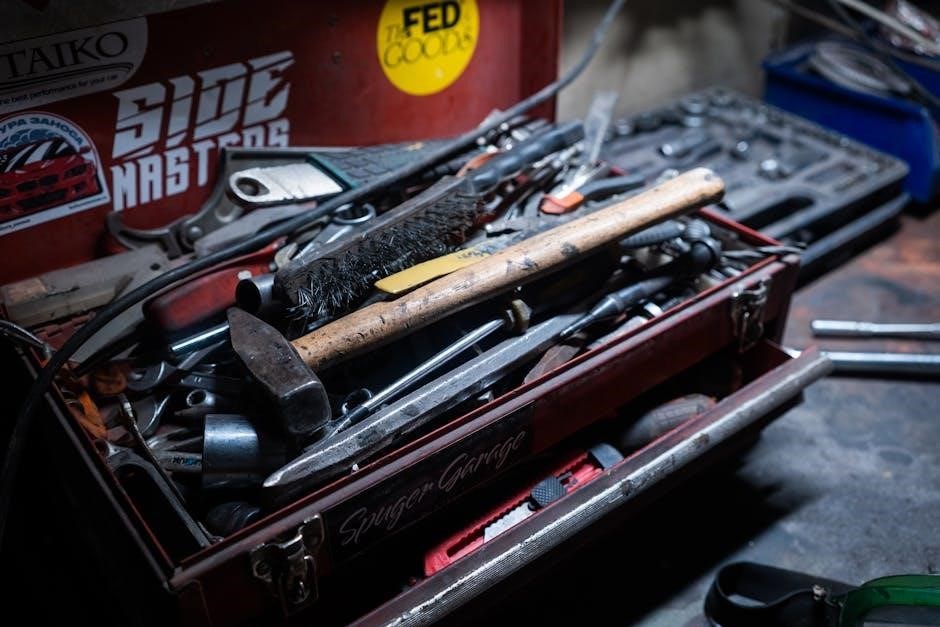This manual provides essential guidance for Club Car battery chargers‚ ensuring safe and efficient charging. It covers proper usage‚ safety precautions‚ and warranty details for optimal performance.
1.1 Overview of the Club Car Battery Charger
The Club Car battery charger is a reliable and efficient charging solution designed for golf cart batteries. It ensures optimal performance and longevity of the battery pack. Key features include compatibility with lead-acid batteries‚ a 4-year warranty‚ and a heavy-duty design. The charger is equipped with a 3-pin round plug and a 16-foot cable for convenient charging. It operates on 36 or 48 volts‚ making it suitable for various Club Car models. Proper usage involves filling batteries with distilled water and disconnecting cables during storage to prevent drain. The charger is not compatible with AGM batteries‚ ensuring it is specifically tailored for lead-acid systems.
1.2 Importance of Proper Charger Usage
Proper usage of the Club Car battery charger is crucial for maintaining battery health and ensuring safety. Incorrect charging can lead to reduced battery life‚ efficiency loss‚ or even safety hazards. Always follow the manual’s guidelines to avoid overcharging or undercharging‚ which can damage the battery pack. Proper charging practices include using distilled water for lead-acid batteries‚ switching to tow mode during storage‚ and disconnecting the main cables to prevent drain. Adhering to these steps ensures optimal performance‚ extends battery lifespan‚ and minimizes the risk of malfunctions or accidents. Correct charger usage also protects the charger itself from potential damage‚ ensuring reliable operation over time.
1.3 Safety Precautions
Safety is paramount when working with Club Car battery chargers. Always wear protective gear‚ including gloves and eyewear‚ when handling batteries or chargers. Ensure the area is well-ventilated to prevent hydrogen gas buildup. Avoid overcharging‚ as it can cause battery damage or fire hazards. In case of acid spills‚ neutralize with baking soda and water‚ then rinse thoroughly. Keep a fire extinguisher rated for electrical fires nearby. Never touch electrical components with wet hands or while standing on a wet surface. Follow all warning labels and instructions carefully. Proper disposal of old chargers is also crucial to prevent environmental harm. Always prioritize caution to protect yourself and others.
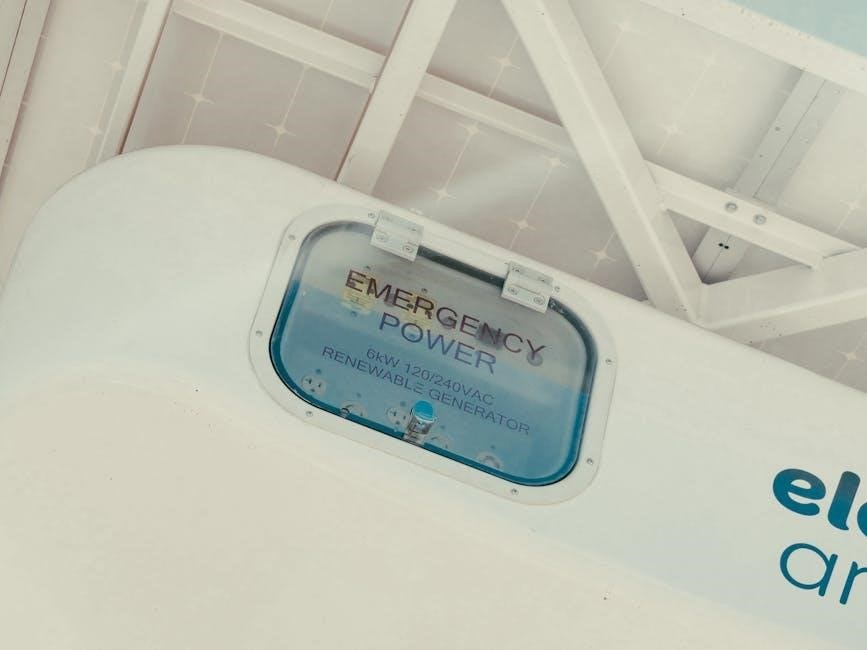
Understanding the Club Car Battery Charger
Understanding the Club Car battery charger involves knowing its key features‚ types‚ and compatibility with different battery types to ensure optimal performance and safe operation.
2.1 Key Features and Specifications
The Club Car battery charger is designed for efficiency and safety‚ featuring a 48V system with a 3-pin round plug and 16-foot heavy-duty cable. It includes a 10-foot power cord and 6-foot charging cable‚ ensuring convenient charging. The charger is compatible with lead-acid batteries but not AGM types‚ making it essential to verify battery compatibility. It also comes with a limited four-year warranty‚ providing peace of mind. The charger’s robust design and advanced charging algorithms ensure optimal battery performance and longevity. These specifications make it a reliable choice for maintaining your Club Car’s power system effectively.
2.2 Types of Club Car Battery Chargers
Club Car offers various battery chargers tailored to different needs. The 36V‚ 48V‚ and 72V chargers cater to specific voltage requirements‚ ensuring compatibility with your cart’s electrical system. The PowerDrive series is a popular choice‚ known for its reliability and efficiency. Additionally‚ there are onboard and portable chargers‚ providing flexibility for users. Some models‚ like the FORM Charge charger‚ are designed exclusively for lead-acid batteries‚ while others may support different battery types. Each charger type is engineered to meet distinct performance demands‚ ensuring optimal charging for your Club Car’s battery system. Understanding the right charger for your cart is crucial for maintaining its performance and longevity.
2.3 Compatibility with Different Battery Types
Club Car battery chargers are designed to work with specific battery types‚ ensuring optimal performance and safety. Lead-acid batteries are the most common and compatible with chargers like the PowerDrive series. However‚ not all chargers support AGM batteries‚ as seen with the FORM Charge charger‚ which is exclusively for lead-acid. Lithium batteries‚ while gaining popularity‚ require specialized chargers due to their unique chemistry. Compatibility is crucial to prevent damage and ensure efficient charging. Always verify your charger’s compatibility with your battery type before use to avoid potential issues and maintain your cart’s electrical health. Proper matching ensures longevity and reliable operation of your Club Car’s power system.
2.4 Components of the Charger
The Club Car battery charger consists of key components designed for safe and efficient charging. The charger includes a 3-pin round plug and a 16-foot heavy-duty cable‚ comprising a 10-foot power cord and a 6-foot charging cable. These components ensure a stable and secure connection. The charger also features an intelligent charging system that monitors voltage and current to prevent overcharging. Additional components may include LED indicators for charge status and thermal protection to prevent overheating; These parts work together to provide reliable performance and protect both the charger and the battery from damage. Understanding these components is essential for proper usage and maintenance of the Club Car battery charger.
Installation and Setup
Ensure proper installation by filling batteries with distilled water‚ switching to tow mode‚ and disconnecting main cables. Use a standard extension cord for onboard charger installation.
3.1 Pre-Installation Checks
Before installing your Club Car battery charger‚ ensure the cart is in tow mode to prevent accidental power draw. Disconnect the main positive and negative cables from the battery pack to avoid electrical hazards. Verify that all batteries are filled with distilled water to maintain optimal charge levels. Check for any signs of wear or damage on the cables and connectors. Ensure the charger is compatible with your battery type‚ as some models are designed specifically for lead-acid batteries and may not work with AGM or lithium batteries. Finally‚ confirm that the charger is set to the correct voltage for your system‚ whether it’s 36V or 48V‚ to prevent any charging issues and ensure safety. Proper preparation will help ensure a smooth and safe installation process.
3.2 Step-by-Step Installation Guide
Begin by plugging the charger into a standard electrical outlet. Next‚ connect the 16-foot heavy-duty cable to the battery pack‚ ensuring the 3-pin round plug is securely attached. Make sure the cart is in tow mode to prevent power draw during charging. For lead-acid batteries‚ fill them with distilled water before connecting. Avoid using the charger with AGM or lithium batteries‚ as it is specifically designed for lead-acid types. Once connected‚ the charger will automatically detect the battery voltage and begin charging. Allow the process to complete without interruption. After charging‚ disconnect the charger from the battery pack and store it in a dry‚ cool place. Always follow the manufacturer’s guidelines for optimal performance and safety.
3.3 Initial Setup and Configuration
Start by ensuring the charger is compatible with your Club Car model and battery type. For lead-acid batteries‚ fill them with distilled water before connecting; Switch the cart to tow mode to prevent power draw during charging. Locate a suitable charging area with adequate ventilation and no flammable materials nearby. Plug the charger into a standard electrical outlet and ensure the power cord is securely connected. If your charger has adjustable settings‚ configure the voltage and charge mode according to the battery specifications. Refer to the manual for specific voltage requirements for your battery type. Once configured‚ the charger is ready for use. Always follow safety guidelines during setup.
3.4 Connecting the Charger to the Battery
Before connecting the charger‚ ensure the cart is in tow mode to prevent power draw. Disconnect the main positive and negative cables from the battery pack. For lead-acid batteries‚ ensure they are filled with distilled water to the recommended level. Locate the battery terminals and identify the positive (+) and negative (-) posts. Attach the charger’s positive cable to the positive terminal and the negative cable to the negative terminal. Ensure all connections are secure to avoid sparks. Plug the charger into a power source and verify the charger is set to the correct voltage for your battery type. Avoid connecting the charger to AGM batteries if using a lead-acid charger‚ as compatibility issues may arise.
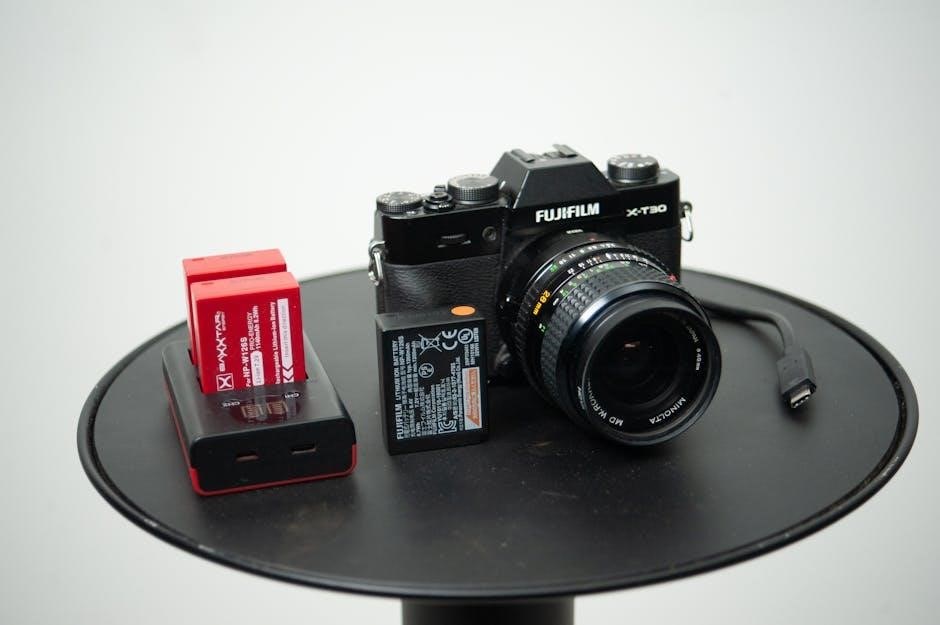
Using the Club Car Battery Charger
This section covers best practices for charging‚ understanding charge modes‚ monitoring the process‚ and safely disconnecting the charger to ensure optimal battery performance and longevity always.

4.1 Best Practices for Charging
Always ensure the battery is fully charged before storage. Check water levels in lead-acid batteries and top up with distilled water if necessary. Avoid overcharging‚ as it can damage the battery. Use the correct charge mode for your battery type‚ ensuring compatibility. Monitor voltage levels during charging to prevent overcharging. Store the charger in a cool‚ dry place when not in use. For long-term storage‚ disconnect the main positive and negative cables from the battery pack. Keep the cart in tow mode to minimize battery drain. Regularly inspect the charging cable for wear and tear. Ensure the charger is designed for your specific battery type‚ such as lead-acid or AGM‚ to avoid compatibility issues.
4.2 Understanding Charge Modes
Club Car battery chargers often feature multiple charge modes to suit different needs. Standard mode provides a regular charge‚ while rapid mode speeds up the process for quick use. Maintenance mode helps preserve battery health by preventing overcharging. Some chargers also offer a desulfation mode to revive deeply discharged batteries. Always select the correct mode based on your battery type and charging requirements. For lead-acid batteries‚ ensure the charger is compatible‚ as some models are not suitable for AGM batteries. Monitoring the charge progress and adjusting modes as needed ensures optimal performance and longevity of your Club Car batteries.
4.3 Monitoring the Charging Process
Monitoring the charging process is crucial for ensuring batteries are charged safely and efficiently. Most Club Car chargers feature LED indicators or digital displays that show the current charge status. Always check these indicators to confirm the charger is functioning correctly. Listen for any unusual noises‚ as they may signal a malfunction. Regularly inspect the charging cable and connections for damage or wear. Ensure the charger is placed in a well-ventilated area to prevent overheating. If using a smart charger‚ refer to its LCD screen for real-time updates on voltage and charging progress. Proper monitoring helps prevent overcharging and extends battery life.
4.4 Disconnecting the Charger
Disconnecting the charger safely is essential to prevent damage and ensure safety. Always turn off the charger before disconnecting it from the power source. Allow the charger to cool down for a few minutes to avoid any residual electrical charge. Start by disconnecting the positive (red) cable from the battery terminal‚ followed by the negative (black) cable. Inspect the connectors for any corrosion or debris and clean them if necessary. Store the charger in a dry‚ cool place‚ away from direct sunlight. Proper disconnection helps maintain the charger’s longevity and prevents accidental power surges. Always follow the manufacturer’s guidelines for safe disconnection.

Maintenance and Upkeep
Regular maintenance ensures optimal performance. Clean the charger‚ inspect cables for wear‚ and store it in a dry‚ cool place. Check for firmware updates if applicable.
5.1 Cleaning and Inspecting the Charger
Regular cleaning and inspection are crucial for maintaining the charger’s efficiency. Disconnect the charger from the power source and battery before cleaning. Use a soft‚ dry cloth to wipe down the exterior‚ removing dirt or debris. Avoid using harsh chemicals or abrasive materials that could damage the surface. Inspect the cables and connectors for signs of wear‚ fraying‚ or corrosion. Replace any damaged components immediately to prevent malfunctions. Ensure all vents are clear to maintain proper airflow and prevent overheating. For long-term storage‚ store the charger in a cool‚ dry place‚ away from direct sunlight. Always refer to the manual for specific cleaning recommendations.
5.2 Storage Tips for Long-Term Use
Proper storage is essential to maintain the charger’s performance and longevity. Disconnect the charger from both the power source and the battery before storing. Clean the charger with a dry cloth to remove dirt or debris. Store it in a cool‚ dry place‚ away from direct sunlight and moisture. Avoid extreme temperatures‚ as they can damage the internal components. If storing for an extended period‚ ensure the charger is fully charged to prevent deep discharge. Check the charger for any signs of damage before reuse. For optimal performance‚ update the firmware if applicable. Proper storage ensures the charger remains reliable and ready for future use.
5.3 Updating Firmware (If Applicable)
Updating the firmware of your Club Car battery charger ensures optimal performance and compatibility. Check the manufacturer’s website for the latest firmware version. Download the update to a compatible device‚ such as a computer or tablet. Connect the charger to the device using a USB cable or other specified interface. Follow the on-screen instructions to initiate the update process. Do not disconnect the charger or turn it off during the update‚ as this could cause permanent damage. Once the update is complete‚ restart the charger to apply the changes. Regular firmware updates help maintain efficiency‚ security‚ and functionality‚ ensuring your charger operates at its best.
5.4 Checking for Wear and Tear
Regularly inspect your Club Car battery charger for signs of wear and tear to ensure reliable performance. Check the power cord and charging cable for frays‚ cuts‚ or damage. Inspect the connectors for corrosion or loose connections‚ which can disrupt charging. Examine the charger’s exterior for physical damage‚ such as dents or cracks‚ that may affect its functionality. Clean the charger periodically to remove dirt or debris that could interfere with its operation. If you notice any damage‚ discontinue use and contact a professional for repairs. Regular inspections help prevent potential issues and extend the lifespan of your charger.
Troubleshooting Common Issues
Identify and resolve charger malfunctions by checking error codes‚ ensuring proper connections‚ and verifying battery compatibility. Address issues promptly to maintain optimal charging performance and safety.
6.1 Diagnosing Charger Malfunctions
Diagnosing charger malfunctions involves checking for error codes‚ ensuring proper battery compatibility‚ and inspecting connections. Verify if the charger is designed for lead-acid or AGM batteries‚ as using the wrong type can cause issues. Check the power cord and charging cable for damage or wear. Ensure the battery pack is properly connected and filled with distilled water. If the charger doesn’t turn on‚ test the outlet or circuit breaker. For persistent problems‚ consult the error code list in the manual or reset the charger. If issues persist‚ consider replacing the charger to maintain optimal performance and safety.
6.2 Common Error Codes and Solutions
Club Car battery chargers may display error codes indicating specific issues. For example‚ an “E1” code often relates to communication errors between the charger and battery‚ while an “E2” code may signal overvoltage. To resolve these‚ ensure the battery is compatible with the charger and check connections for tightness. If the issue persists‚ reset the charger by disconnecting power for 30 seconds. For “E3” codes‚ which may indicate a faulty temperature sensor‚ inspect the sensor or contact a professional. Always refer to the manual for specific code meanings and solutions to avoid further damage and ensure safe operation.
6.3 Resetting the Charger
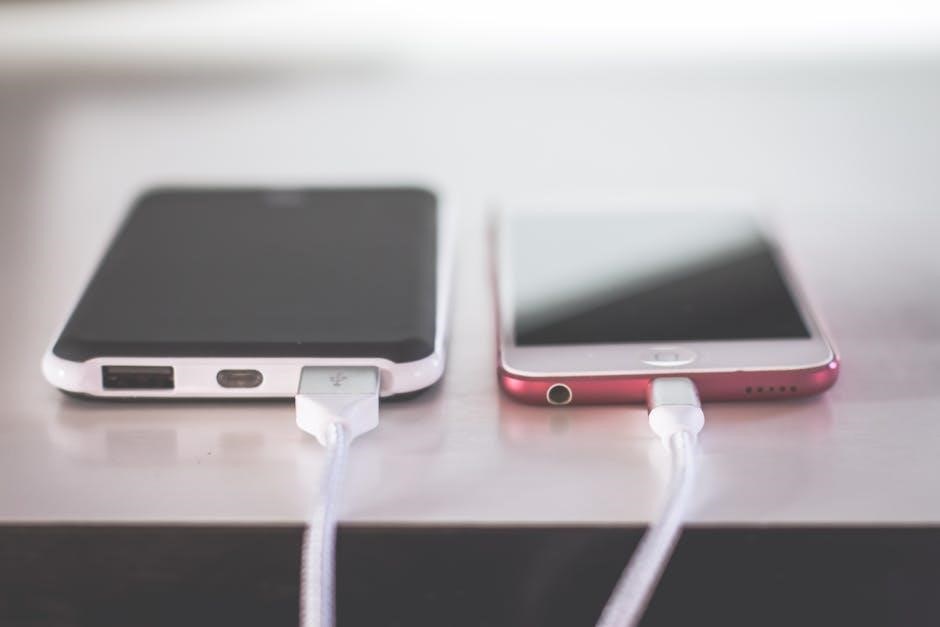
To reset the Club Car battery charger‚ first ensure it is disconnected from both the power source and the battery. Locate the reset button‚ typically found on the rear or bottom of the unit. Press and hold the reset button for 10-15 seconds until the charger’s lights flash‚ indicating a successful reset. If the charger does not have a reset button‚ unplug it from the power source for 30 seconds to allow the system to clear any temporary faults. After resetting‚ reconnect the charger to the battery and power supply to test its functionality. If issues persist‚ consult the manual or contact a professional for further assistance.
6.4 When to Replace the Charger

Replace the Club Car battery charger if it shows signs of irreversible damage or persistent malfunction. If the charger is no longer under warranty and repair costs exceed replacement value‚ consider upgrading. Look for signs like frequent error codes‚ overheating‚ or physical damage to the unit or cables. If the charger fails to charge the battery consistently or shows incompatibility with your battery type‚ replacement is necessary. Always consult the manual or contact a professional to confirm the need for replacement before purchasing a new charger. Ensure the replacement meets Club Car specifications for optimal performance and safety.
Safety and Emergency Procedures

Always handle battery acid spills immediately‚ follow emergency shutdown steps‚ and keep fire extinguishers nearby. Properly dispose of old chargers to ensure environmental and personal safety.
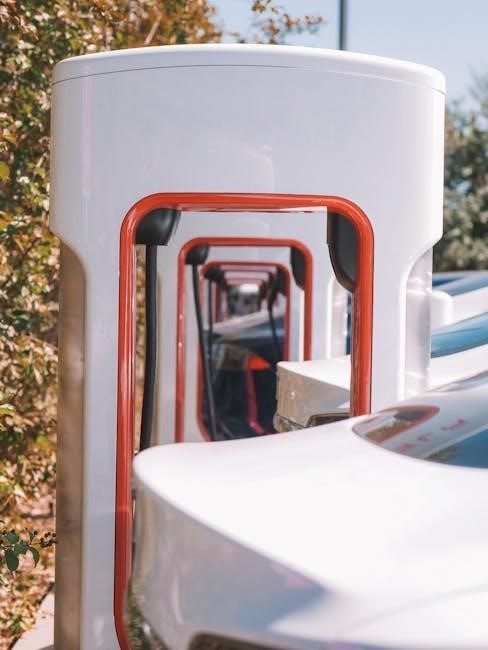
7.1 Handling Battery Acid Spills

When handling battery acid spills‚ act quickly to prevent damage. Wear protective gear like gloves and goggles. Neutralize the spill with baking soda or an acid-neutralizing solution. Rinse thoroughly with distilled water. Avoid using abrasive cleaners. Dispose of cleaning materials properly. Inspect the area for damage and ensure it is dry before resuming any activities. Always refer to the Club Car manual for specific procedures tailored to your charger model. Proper cleanup helps maintain safety and prevents corrosion or further issues. Keep a spill kit nearby for emergencies. Never touch spilled acid with bare hands‚ as it can cause severe burns. Prioritize safety and follow all recommended protocols.
7.2 Emergency Shutdown Procedures
In case of an emergency‚ immediately disconnect the charger from the power source and the battery. Switch the cart to “tow mode” to prevent accidental power draw. Use the emergency cutoff switch if available. Ensure all connections are secure and avoid sparks. Wear protective gear‚ including gloves and goggles‚ to prevent injury. If acid is involved‚ neutralize it with a suitable solution. Ventilate the area to prevent gas buildup. Refer to the Club Car manual for specific shutdown steps tailored to your model. Always prioritize safety and act swiftly to minimize risks. Keep emergency contact numbers handy for professional assistance if needed.
7.3 Fire Safety Measures
Fire safety is critical when dealing with battery chargers due to the risk of electrical and chemical hazards. Always keep a fire extinguisher rated for electrical and chemical fires nearby. Ensure the charging area is well-ventilated to prevent hydrogen gas buildup‚ which can ignite. Avoid sparks or open flames near the charger or batteries. If a fire occurs‚ evacuate the area‚ shut off power‚ and use the appropriate extinguisher. Never use water on electrical or battery fires. After the fire is controlled‚ inspect the charger and batteries for damage. Regularly review the manual for specific fire safety guidelines tailored to your Club Car model. Stay prepared to act quickly in emergencies to prevent escalation.
7.4 Proper Disposal of Old Chargers
Proper disposal of old Club Car battery chargers is essential to protect the environment and comply with regulations. Start by checking local electronic waste disposal guidelines‚ as many communities have designated facilities for recycling batteries and chargers. Remove any batteries from the charger and dispose of them separately‚ following specific battery recycling protocols. Do not throw chargers in regular trash‚ as they contain hazardous materials. Instead‚ take them to an authorized e-waste recycling center. Ensure all personal data is erased if the charger has digital components. Securely package the charger to prevent damage during transport. Recycling helps conserve resources and reduces landfill waste. Always follow local environmental laws for responsible disposal.
Thank you for reading the Club Car Battery Charger Manual. This guide has covered essential topics to ensure safe‚ efficient‚ and proper charger usage and maintenance. By following the outlined best practices and safety precautions‚ you can maximize your charger’s performance and extend its lifespan. Always refer to this manual for troubleshooting and maintenance tips to keep your Club Car running smoothly. Happy charging!
8.1 Summary of Key Points
This manual has provided a comprehensive guide to understanding‚ installing‚ and maintaining your Club Car battery charger. Key points include proper charging practices‚ safety precautions‚ and storage tips to ensure longevity. Always disconnect batteries during storage and use distilled water for lead-acid batteries. Be aware of compatibility issues‚ such as the FORM Charge charger being designed only for lead-acid batteries. Regular maintenance‚ like cleaning and inspecting the charger‚ is crucial for optimal performance. Familiarize yourself with troubleshooting steps and error codes to address malfunctions promptly. By following these guidelines‚ you can ensure safe‚ efficient‚ and reliable charging for your Club Car.
8.2 Final Tips for Optimal Charger Performance
To maximize your Club Car battery charger’s performance‚ always follow the manufacturer’s guidelines and safety protocols. Regularly inspect cables and connections for wear and tear‚ and clean them to ensure proper conductivity. Store batteries in a cool‚ dry place during off-seasons‚ and disconnect them to prevent drain. Use distilled water for lead-acid batteries to maintain electrolyte levels. Avoid overcharging‚ as it can reduce battery lifespan. Monitor charge levels closely and avoid extreme temperatures. Keep the charger away from flammable materials and ensure good ventilation. By adhering to these tips‚ you can extend the life of both your batteries and charger‚ ensuring reliable performance for years to come.
